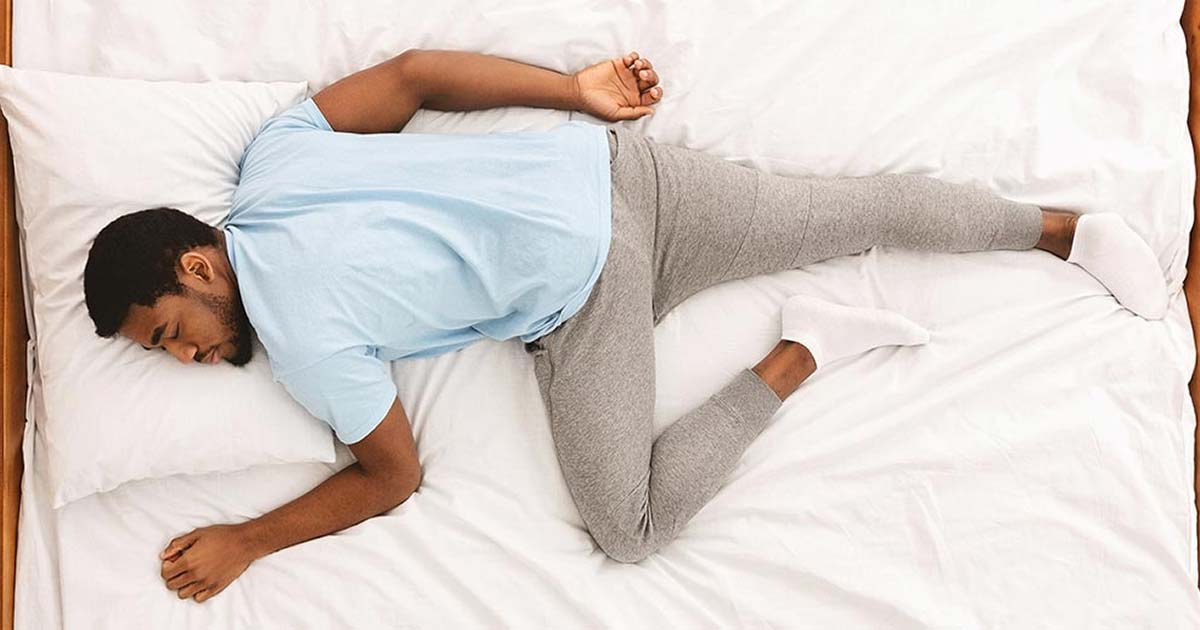Sleeping Positions to Help With Low Back Pain
Key Takeaways:
- Sleep posture affects spinal alignment and can either relieve or worsen low back pain.
- Side sleeping with a pillow between the knees is often the most back-friendly position.
- Avoid sleeping on your stomach, which strains the spine and neck.
- Supportive pillows and a firm mattress can make a significant difference.
- Physical therapy can help identify the root cause of pain and improve sleep posture.
Waking up with back pain? Your sleeping position might be the culprit. Learn which sleep positions support spinal alignment and reduce discomfort—and how simple adjustments can help you wake up feeling better.
What’s the best sleeping position for low back pain?
Sleeping on your side with a pillow between your knees is generally the best position for easing low back pain. It keeps your spine aligned and reduces pressure on your lower back. Back sleeping with a pillow under the knees can also help, while stomach sleeping is typically discouraged due to increased spinal stress.
Why Sleep Position Matters
We spend nearly one-third of our lives sleeping—so our sleep posture can have a major impact on spinal health. Poor alignment during the night can strain muscles, compress discs, and worsen existing pain. Good sleep posture supports the spine’s natural curves, reduces pressure points, and allows the body to recover overnight.
Top Sleeping Positions for Low Back Pain Relief
- Side Sleeping with a Pillow Between the Knees
- Lie on your left or right side.
- Bend knees slightly and place a firm pillow between them.
- Keep your hips stacked and your shoulders aligned.
- This position helps maintain spinal alignment and prevents rotation in the lower back.
- Back Sleeping with a Pillow Under the Knees
- Lie flat on your back.
- Place a small pillow under your knees to support the curve of your lower spine.
- Keep your head pillow supportive but not too thick.
- This reduces lumbar stress and keeps your pelvis in a neutral position.
- Fetal Position (for herniated discs)
- Curl gently on your side with knees drawn toward the chest.
- Helps open the space between spinal vertebrae.
- Ideal for individuals with disc issues or pinched nerves.
What to Avoid: Sleeping on Your Stomach
While some people naturally gravitate toward this position, it places excessive strain on the lower back and twists the neck unnaturally. If you must sleep on your stomach, try placing a pillow under your hips to minimize spinal extension.
Additional Tips for Sleeping with Low Back Pain
- Choose a firm, supportive mattress that keeps your spine aligned.
- Use a cervical pillow that supports your neck and prevents strain.
- Practice a nighttime stretching routine to loosen tight muscles before bed.
- Adjust your sleeping surface—sometimes a mattress topper can improve comfort.
When to Seek Professional Help
If your low back pain persists despite changing your sleeping position, it may be time to consult a physical therapist. A PT can assess your posture, muscle imbalances, and daily habits to create a personalized treatment plan that includes exercises and sleep strategies.
Get Expert Help for Low Back Pain in Bridgewater, NJ
At Synaptic Rehabilitation, we help clients in Bridgewater, NJ and surrounding areas find lasting relief from low back pain—day and night. Our physical therapy programs address posture, flexibility, and core strength so you can sleep better and move easier.
Call 908-801-6425 or visit our clinic at 1200 Route 22 East, Suite 4, Bridgewater, NJ 08807 to schedule your consultation today.
Steven Cheung, DPT
Steven is the founder and lead physical therapist at SYNAPTIC Rehabilitation. He earned a BS in Exercise Science Applied Kinesiology from Rutgers University in New Brunswick, NJ and his Doctorate degree from American International College in Springfield, MA. Steven specializes in movement disorders such as Parkinson’s disease and many other neurological disorders. Outside of practicing physical therapy Steven enjoys time with his wife, running, and staying active.

